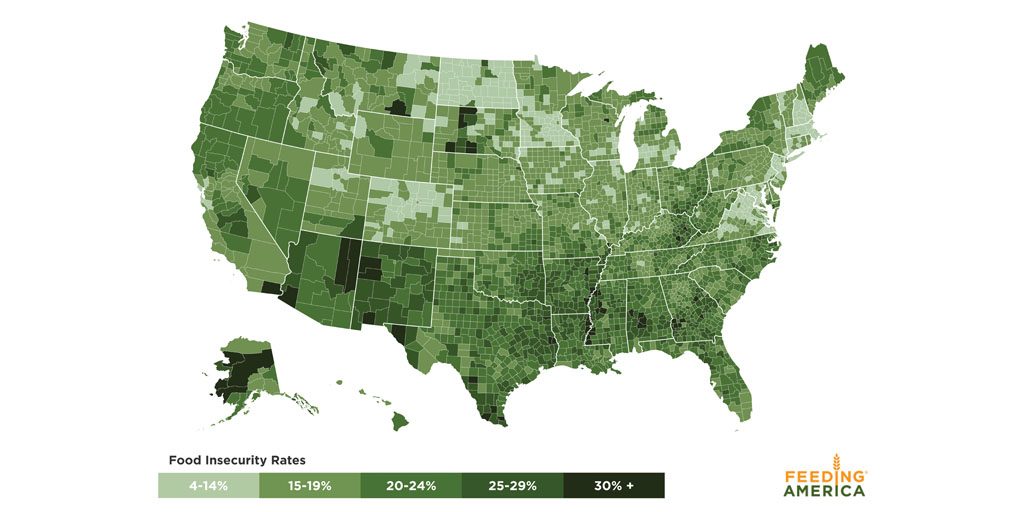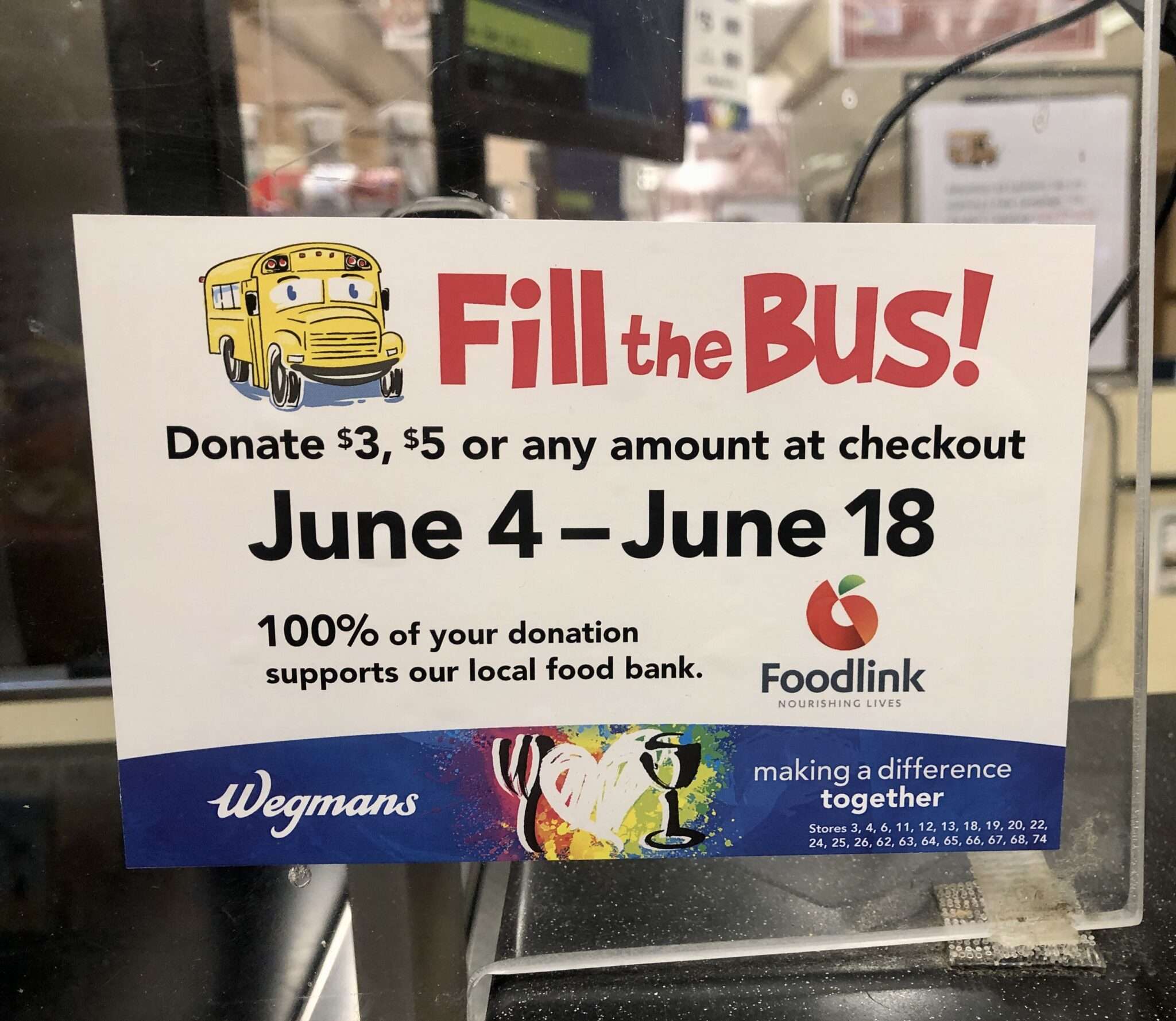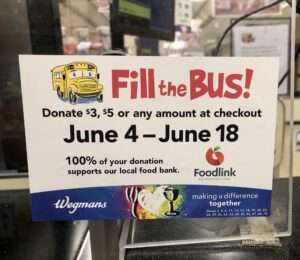
Feeding America this week released its annual Map the Meal Gap report, which shows food-insecurity data for every county in the country.
Within Foodlink’s 10-county service area, more than 145,000 people — about 11.5 percent of the population — live in food-insecure households, according to the report. Of those people, approximately 48,000 are children.
MAP: Explore the data from the ‘Map the Meal Gap’ report
In Monroe County, 12.4 percent of the population — more than 92,000 people — are food-insecure, which the USDA defines as “a lack of access, at times, to enough food for an active, healthy life for all household members and limited or uncertain availability of nutritionally adequate foods.”
Among the other nine counties in Foodlink’s service area, the food-insecurity rates, from low to high, were as follows: Ontario (9%), Wayne (9.8%), Yates (9.9%), Seneca (10.3), Genessee (10.5%), Wyoming (10.5%), Livingston (10.9%), Orleans (11.8%), and Allegany (12.4%). The average meal cost ranged from $2.47 in Yates county, to $3.29 in Allegany County.
The study also shows a large portion of the population that is considered food-insecure, yet are not eligible for federal nutrition programs, such as the Supplemental Nutrition Assistance Program. Those rates range from 22% in Yates County to 39% in Livingston County.
Nationally, Rural and Southern communities are disproportionately impacted. Eight of the top ten states with the highest percentage of child food insecurity are all located in the South. Additionally, 84% of the counties with high child food insecurity rates are rural.
The number of Americans identified by the USDA as food insecure fell significantly in the past seven years in the wake of the Great Recession. The national rate peaked at 50 million in 2009 to 40 million in 2017 (the most recent year for which data are available).
“The Feeding America nationwide network of food banks is investing in our nation’s future by helping to provide over 146 million meals to children every year,” said Claire Babineaux-Fontenot, chief executive officer of Feeding America. “Still, Map the Meal Gap highlights that more must be done. Together food banks, corporations, policymakers, donors, volunteers and advocates can solve hunger.
“I encourage everyone to visit the website, map.feedingamerica.org to find out what hunger looks like in their community and get involved to be part of the solution,” Babineaux-Fontenot continued. “One way is to tell Congress to invest in kids during Child Nutrition Reauthorization legislation and increase access to food for kids during the summer. Your voice matters and we can make a difference.”





